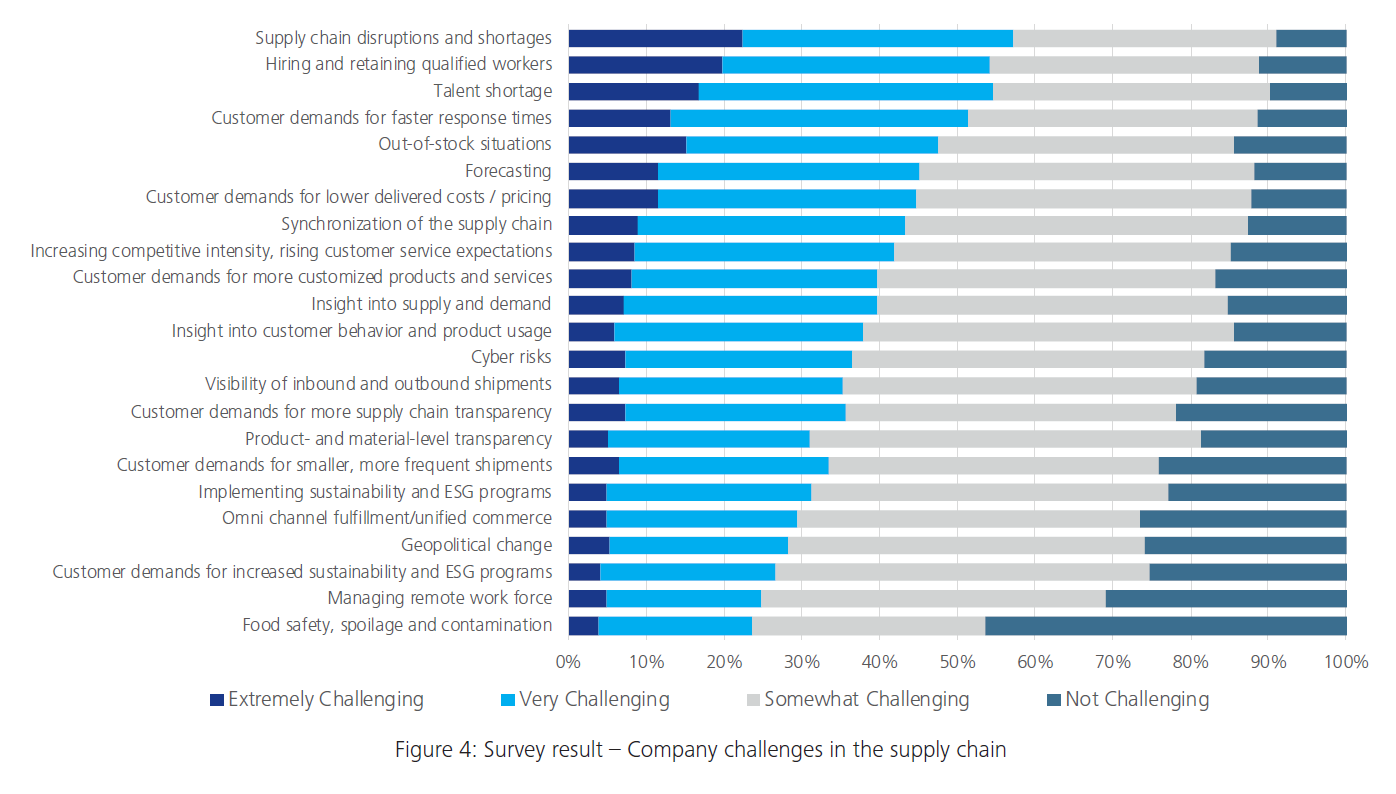technology integration
Empowering Teams: Effective Strategies for Remote Work Success

Empowering Teams: Effective Strategies for Remote Work Success
As the landscape of work continues to evolve, remote work has become a predominant feature of modern business. Navigating the challenges and maximizing the benefits require well-crafted strategies. In this article, we delve into effective remote work strategies that empower teams and drive success.
Creating a Collaborative Virtual Environment
One of the key challenges in remote work is maintaining a sense of collaboration. To overcome this, businesses should invest in collaborative tools and platforms. Video conferencing, project management systems, and communication apps play a crucial role in fostering virtual teamwork. Establishing clear communication channels helps bridge the physical gap and promotes a sense of unity among remote team members.
Setting Clear Expectations and Goals
Clarity is paramount in a remote work setting. Establishing clear expectations and goals helps remote employees understand their roles and responsibilities. Clear communication regarding deadlines, deliverables, and performance expectations ensures that everyone is on the same page. This clarity not only enhances productivity but also contributes to a positive work culture.
Encouraging Flexible Schedules and Work-Life Balance
Remote work often comes with the benefit of flexibility. Encouraging team members to adopt flexible schedules that suit their individual preferences can contribute to increased job satisfaction. However, it’s equally important to emphasize the importance of maintaining a healthy work-life balance. Establishing boundaries and promoting self-care can prevent burnout and ensure sustained productivity.
Fostering Virtual Team Building Activities
Building a strong team culture is challenging when employees are geographically dispersed. Virtual team-building activities can bridge this gap. From virtual happy hours to online games and collaborative projects, fostering a sense of camaraderie among team members is essential. These activities contribute to a positive team spirit and strengthen interpersonal connections.
Providing Adequate Training and Support
Remote work often requires employees to adapt to new technologies and tools. Providing comprehensive training and ongoing support is crucial for the seamless integration of remote work strategies. This ensures that team members feel equipped to navigate the digital landscape and perform their roles efficiently.
Implementing Performance Monitoring and Feedback Systems
In a remote work environment, traditional methods of performance monitoring may need adjustment. Implementing digital tools for performance tracking and providing regular feedback becomes essential. This not only helps in gauging individual and team performance but also provides opportunities for professional development.
Cultivating a Culture of Trust and Accountability
Trust is the foundation of successful remote work strategies. Leaders should cultivate a culture of trust by empowering their teams and acknowledging individual contributions. Simultaneously, fostering accountability ensures that team members take ownership of their tasks and deliverables. This dual approach creates a balanced and resilient remote work culture.
Leveraging Technology for Seamless Collaboration
The right technology is instrumental in ensuring seamless collaboration among remote teams. Cloud-based solutions, collaborative software, and virtual project management tools facilitate efficient workflows. Integrating these technologies streamlines processes, enhances communication, and promotes a unified work environment.
Addressing Mental Health and Well-Being
The isolation of remote work can impact the mental health and
Housing Horizon: Unveiling Real Estate Market Trends

Housing Horizon: Unveiling Real Estate Market Trends
The real estate market is a dynamic landscape influenced by various factors, from economic shifts to societal changes. This article delves into the current trends shaping the real estate market, offering insights into what homebuyers, sellers, and investors can expect in the ever-evolving housing horizon.
Economic Impact on Housing
Economic factors play a significant role in shaping real estate trends. Economic downturns or upswings directly influence housing demand and affordability. As economies recover from global challenges, such as the recent pandemic, real estate markets respond with shifts in pricing, mortgage rates, and overall market activity.
Remote Work and Housing Preferences
The rise of remote work has brought about a paradigm shift in housing preferences. Homebuyers are increasingly prioritizing spaces that accommodate remote work needs. This has led to a surge in demand for homes with dedicated offices, outdoor spaces, and enhanced connectivity, reshaping the criteria for an ideal home.
Urban vs. Suburban Dynamics
The dynamics between urban and suburban living have experienced notable changes. While urban areas historically held appeal for their proximity to amenities and workplaces, the pandemic has driven a surge in suburban demand. Homebuyers seek larger properties, green spaces, and a quieter lifestyle, prompting a reevaluation of urban living priorities.
Sustainability and Green Features
Sustainability has become a focal point in real estate trends. Homebuyers increasingly prioritize eco-friendly features, energy-efficient appliances, and environmentally conscious designs. The integration of sustainable practices not only aligns with environmental concerns but also enhances property values and attracts a growing segment of environmentally conscious buyers.
Technology Integration in Real Estate
The integration of technology is transforming the real estate industry. Virtual tours, augmented reality, and online platforms are becoming standard tools for property viewing and transactions. Technology streamlines processes, enhances property marketing, and offers a more accessible and efficient experience for both buyers and sellers.
Affordability Challenges and Solutions
Affordability remains a persistent challenge in many real estate markets. Skyrocketing home prices and limited inventory pose barriers for aspiring homebuyers. Addressing affordability challenges requires innovative solutions, such as government initiatives, community land trusts, and collaborative efforts between stakeholders to create more inclusive housing opportunities.
Market Trends in Commercial Real Estate
Commercial real estate is also experiencing shifts in response to changing business landscapes. The rise of remote work has influenced office space demand, with companies reevaluating their space requirements. Retail spaces are adapting to e-commerce trends, and industrial properties are in high demand due to the growth of online shopping and distribution needs.
Vexhibits: Navigating Real Estate Trends
Explore how Vexhibits navigates and adapts to real estate trends. By staying attuned to market dynamics, Vexhibits showcases a commitment to providing spaces that align with evolving housing preferences and emerging trends.
Financial Considerations and Mortgage Trends
Financial considerations, including mortgage trends, significantly impact the real estate market. Mortgage rates, lending policies, and government incentives influence homebuying decisions. Understanding these financial dynamics is crucial for both buyers and sellers, shaping their strategies in response to prevailing market
Navigating Global Expansion: Effective Business Strategies

Navigating Global Expansion: Effective Business Strategies
Expanding a business globally presents both opportunities and challenges. In this article, we explore key strategies for successful global business expansion, guiding organizations through the intricate process of entering new markets and thriving on a global scale.
Market Research: The Foundation of Global Expansion
Before embarking on global expansion, thorough market research is essential. Understanding the target market’s demographics, consumer behavior, and cultural nuances provides valuable insights. This foundational knowledge informs decision-making and helps tailor strategies to meet the specific demands of diverse markets.
Localization: Adapting to Cultural Differences
Cultural sensitivity is critical in global business expansion. Localization involves adapting products, services, and marketing strategies to suit the cultural preferences and norms of each target market. Respectful integration ensures that the business resonates with local audiences, fostering acceptance and trust.
Strategic Partnerships: Leveraging Local Expertise
Establishing strategic partnerships with local businesses or experts is a powerful strategy for global expansion. These partnerships provide invaluable insights into the local business landscape, regulatory environment, and consumer behavior. Leveraging local expertise enhances the organization’s ability to navigate unfamiliar territories successfully.
Legal Compliance: Navigating Regulatory Challenges
Global expansion brings with it a myriad of regulatory challenges. From compliance with local laws to understanding international trade regulations, businesses must navigate complex legal landscapes. Investing in legal counsel and staying abreast of regulatory changes is crucial to ensuring a smooth and lawful expansion process.
Risk Management: Anticipating and Mitigating Challenges
Expanding globally involves inherent risks. Effective risk management strategies anticipate potential challenges and outline mitigation plans. Businesses must identify geopolitical, economic, and operational risks to develop contingency plans that safeguard the continuity and success of global operations.
Technology Integration: Streamlining Global Operations
Technology plays a pivotal role in global business expansion. Integrating advanced technologies for communication, project management, and data analytics streamlines global operations. This ensures efficient collaboration among teams across different time zones and facilitates data-driven decision-making.
Talent Acquisition and Development: Building a Global Team
A successful global expansion requires a skilled and diverse workforce. Businesses should focus on talent acquisition strategies that attract individuals with a deep understanding of local markets. Additionally, investing in ongoing training and development programs ensures that the global team remains adaptive and competitive.
Financial Management: Adapting to Currency and Market Fluctuations
Fluctuations in currency and market conditions are inherent to global expansion. Implementing robust financial management strategies, including hedging against currency risks and regularly assessing market conditions, safeguards the financial stability of the business during global operations.
Customer-Centric Approach: Building Global Relationships
Maintaining a customer-centric approach is paramount in global expansion. Building strong relationships with customers across diverse cultures requires attentiveness to customer needs, personalized service, and responsiveness to feedback. A positive customer experience fosters brand loyalty and advocacy on a global scale.
Continuous Evaluation and Adaptation: Staying Agile
Global business environments are dynamic, requiring organizations to remain agile. Continuous evaluation of strategies, market conditions, and performance metrics is essential. This ongoing assessment enables businesses to adapt quickly to changes, capitalize on emerging
Elevating Experiences: Transforming Customer Interaction in Business

Elevating Experiences: Transforming Customer Interaction in Business
In the competitive landscape of modern business, the focus on customer experience has become a key differentiator. This article explores the significance of customer experience in business, examining its impact, strategies for enhancement, and showcasing how businesses can prioritize and elevate customer interactions.
The Strategic Imperative of Customer Experience
Customer experience is no longer just a component of business operations; it is a strategic imperative. Businesses recognize that the way customers perceive and interact with a brand significantly influences their loyalty, repeat business, and overall satisfaction. A positive customer experience has a ripple effect, leading to positive word-of-mouth, brand advocacy, and increased market share.
Understanding the Customer Journey
Understanding the customer journey is fundamental to enhancing the overall experience. From the initial awareness stage to the post-purchase interactions, every touchpoint shapes the customer’s perception. Businesses that map and analyze the customer journey gain insights into pain points, preferences, and opportunities for improvement, allowing them to create a more seamless and satisfying experience.
Personalization as a Driving Force
Personalization is a key driver in elevating customer experiences. From personalized marketing messages to tailored product recommendations, businesses leverage data and technology to create individualized interactions. The ability to anticipate and fulfill customer needs on a personal level fosters a sense of connection and loyalty.
The Role of Technology in Enhancing Experiences
Technology plays a pivotal role in transforming customer interactions. Businesses integrate chatbots, artificial intelligence, and data analytics to streamline processes, provide real-time support, and deliver personalized experiences. The seamless integration of technology enhances efficiency, responsiveness, and overall customer satisfaction.
Omnichannel Approach for Consistency
In the era of multichannel communication, providing a consistent experience across all channels is crucial. Customers expect a seamless transition between online and offline interactions. An omnichannel approach ensures that whether a customer engages through social media, a website, or in-store, the experience remains cohesive, creating a unified brand image.
Vexhibits: A Showcase of Exceptional Customer Experience
Explore how Vexhibits exemplifies exceptional customer experiences. By prioritizing customer needs, embracing personalization, and leveraging technology, Vexhibits showcases the transformative impact of prioritizing customer interactions in business.
Employee Engagement and its Influence
Employee engagement is intrinsically linked to customer experience. Satisfied and motivated employees are more likely to provide positive interactions with customers. Businesses that invest in employee training, create a positive workplace culture, and align employee values with the company’s mission enhance the overall customer experience.
Feedback Loops for Continuous Improvement
Feedback loops are invaluable for continuous improvement in customer experience. Businesses that actively seek and analyze customer feedback gain insights into areas of improvement. Whether through surveys, reviews, or direct customer communication, feedback provides a roadmap for refining products, services, and overall customer interactions.
Anticipating and Resolving Issues Proactively
Anticipating and resolving issues before they escalate is a proactive approach to customer experience. Businesses that invest in predictive analytics, monitor customer behavior, and address potential issues in real-time demonstrate a commitment to customer satisfaction. Proactive resolution not only mitigates negative experiences but
Evolving Enterprises: Digital Transformation Dynamics

Evolving Enterprises: Digital Transformation Dynamics
In the fast-paced landscape of modern business, digital transformation has become a defining force, reshaping the way companies operate and engage with their stakeholders. This article delves into the dynamics of digital transformation, exploring its impact on businesses and the key trends driving this evolution.
Defining Digital Transformation in Businesses
Digital transformation is more than a technological upgrade; it’s a comprehensive overhaul of business processes, models, and organizational culture. It involves leveraging digital technologies to enhance operations, improve customer experiences, and stay competitive in an increasingly digital world. This shift encompasses the integration of advanced technologies like AI, IoT, cloud computing, and data analytics.
Enhancing Customer Experiences through Digital Innovation
One of the primary drivers of digital transformation is the quest to enhance customer experiences. Businesses are leveraging technology to create seamless, personalized interactions. From AI-powered chatbots to data-driven insights, companies are optimizing touchpoints to meet customer expectations and build lasting relationships. The customer-centric approach is at the core of successful digital transformation initiatives.
Embracing Cloud Computing for Agility and Efficiency
Cloud computing is a linchpin of digital transformation, offering businesses unprecedented agility and efficiency. It enables scalable and flexible solutions, allowing companies to adapt to changing demands without significant infrastructure investments. Cloud services facilitate collaboration, streamline processes, and provide the foundation for innovative business models.
Data Analytics: Driving Informed Decision-Making
In the digital era, data is a goldmine of insights. Businesses are harnessing the power of data analytics to make informed decisions, identify trends, and predict future scenarios. Whether optimizing supply chains, refining marketing strategies, or improving operational efficiency, data analytics is a transformative force shaping the decision-making processes of businesses.
Internet of Things (IoT) Revolutionizing Operations
The Internet of Things (IoT) is ushering in a new era of connectivity. From smart manufacturing to predictive maintenance, IoT devices are providing real-time data that enhances operational efficiency. Businesses are incorporating IoT to monitor assets, optimize processes, and deliver innovative products and services that cater to evolving market demands.
Artificial Intelligence (AI) for Intelligent Automation
Artificial Intelligence is a cornerstone of digital transformation, enabling intelligent automation across various business functions. From automating routine tasks to powering advanced analytics and machine learning applications, AI enhances efficiency and allows employees to focus on higher-value tasks. Businesses that embrace AI gain a competitive edge in innovation and operational excellence.
Cybersecurity: A Paramount Concern in Digital Evolution
As businesses digitize their operations, cybersecurity becomes a critical aspect of digital transformation. The increasing reliance on interconnected technologies makes organizations more susceptible to cyber threats. Implementing robust cybersecurity measures is imperative to safeguard sensitive data, maintain customer trust, and ensure the integrity of digital transformation initiatives.
Agile Work Environments and Remote Collaboration
Digital transformation is reshaping how work gets done. Agile work environments, supported by collaboration tools and communication platforms, have become the norm. The shift towards remote work has been accelerated, necessitating digital solutions for seamless collaboration. Businesses are investing in technologies that facilitate remote work while maintaining productivity and employee
Navigating Supply Chain Challenges: Innovative Solutions

Navigating Supply Chain Challenges: Innovative Solutions
The global supply chain is facing unprecedented disruptions, requiring businesses to reassess and adapt to ensure continuity and resilience. In this article, we explore the challenges posed by supply chain disruptions and innovative solutions to navigate through these turbulent times.
Understanding Supply Chain Disruptions
Supply chain disruptions can arise from various factors, including natural disasters, geopolitical events, and unforeseen economic challenges. The interconnected nature of global supply chains means that a disruption in one part of the world can have cascading effects across industries. The COVID-19 pandemic has particularly highlighted the vulnerability of supply chains to unexpected shocks.
Impact on Businesses: From Delays to Shortages
The repercussions of supply chain disruptions are felt by businesses of all sizes. From delays in production and distribution to shortages of critical components, the disruptions can lead to increased costs, revenue loss, and potential damage to a company’s reputation. Businesses must proactively address these challenges to stay afloat in the face of uncertainty.
Technological Integration for Enhanced Visibility
One of the innovative solutions to supply chain disruptions is the integration of advanced technologies for enhanced visibility. Businesses are leveraging technologies such as Internet of Things (IoT) sensors, blockchain, and real-time analytics to gain insights into their supply chains. This increased visibility allows for better risk assessment, early detection of potential disruptions, and informed decision-making.
Diversification and Redundancy Strategies
To mitigate the impact of disruptions, businesses are adopting diversification and redundancy strategies. This involves diversifying supplier networks, sourcing materials from multiple regions, and maintaining safety stock levels. By spreading risk across different suppliers and geographic locations, businesses can enhance their resilience to unforeseen disruptions.
Strategic Partnerships and Collaboration
Collaboration is becoming a key component of supply chain resilience. Establishing strategic partnerships with suppliers, logistics providers, and other stakeholders creates a network of support. Collaborative efforts enable the sharing of information, resources, and expertise, fostering a more agile and responsive supply chain ecosystem.
Data-Driven Decision Making
Data-driven decision-making is paramount in navigating supply chain disruptions. Businesses are leveraging big data analytics to forecast demand, optimize inventory levels, and identify potential risks. The use of predictive analytics enables businesses to proactively respond to changes in market conditions and supply chain dynamics.
Supply Chain Transparency and Ethical Sourcing
Transparency in the supply chain is gaining prominence as companies and consumers alike prioritize ethical sourcing. Businesses are investing in technologies that provide end-to-end visibility, allowing consumers to trace the origins of products. Ethical sourcing practices not only build trust with consumers but also contribute to a more sustainable and resilient supply chain.
Reskilling the Workforce for Agility
The human element plays a crucial role in navigating supply chain disruptions. Businesses are reskilling their workforce to enhance agility and adaptability. Cross-training employees, fostering a culture of continuous learning, and investing in skills relevant to supply chain management contribute to a more versatile and resilient workforce.
Investment in Robust Risk Management Strategies
Supply chain disruptions necessitate a reevaluation and enhancement of risk management strategies. Businesses
